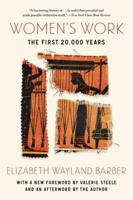Publisher's Synopsis
Life in the Iron-Mills
by Rebecca Harding Davis
Life in the Iron Mills is a short story (or novella) written by Rebecca Harding Davis in 1861, set in the factory world of the nineteenth century. It is one of the earliest American realist works, and is an important text for those who study labor and women's issues. It was immediately recognized as an innovative work, and introduced American readers to "the bleak lives of industrial workers in the mills and factories of the nation."
Rebecca Harding Davis wrote Life in the Iron Mills and other short stories to represent the events going on around her during the era of the American Civil War. The short story was published by The Atlantic Monthly. Davis was paid well for her story and continued to publish short stories for The Atlantic Monthly. Life in the Iron Mills received much attention during her lifetime; she was also recognized by several literary figures including as Oliver Wendell Holmes, Sr., Amos Bronson Alcott, Elizabeth Palmer Peabody, Henry Ward Beecher, Ralph Waldo Emerson, and Nathaniel Hawthorne. Hawthorne encouraged Davis to continue to write, but she was forgotten by the literary world by the time of her death.
Davis attended college at Washington Women Seminary and studied the Bible intensively. It is here Davis would encounter influential scholars and political thinkers, and explore ideas and produce thoughts of her own regarding such social and religious issues. According to some scholars, Davis' work was heavily influenced by the "ethical teachings of Christianity." This is evident in Life in the Iron Mills, where Davis explores the greediness that derives from the Industrial Revolution.










